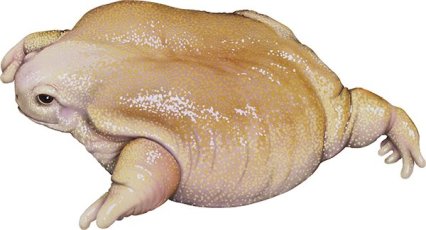  Myobatrachus gouldii, (also known as the turtle frog) is an amphibian found in Western Australia. It is monotypic, represented by just a single species. Looking like a shell-less turtle, it has a narrow head, short limbs, and a round body. Turtle frogs are small, at about 4-5 centimetres long.
Myobatrachus gouldii, (also known as the turtle frog) is an amphibian found in Western Australia. It is monotypic, represented by just a single species. Looking like a shell-less turtle, it has a narrow head, short limbs, and a round body. Turtle frogs are small, at about 4-5 centimetres long. The head is very small, with tiny eyes, and is quite distinct from the body, unlike other frogs. Its limbs are short and muscular, especially the arms.  The turtle frog can be found in the Perth region, in Southwestern Australia. This area is mostly semi-arid, so the frogs have adapted to this region only. They are not found in any other place. Despite this, these frogs are not endangered.
The turtle frog can be found in the Perth region, in Southwestern Australia. This area is mostly semi-arid, so the frogs have adapted to this region only. They are not found in any other place. Despite this, these frogs are not endangered. Found almost exclusively on sandy soils, sometimes associated with termite colonies, this species is one of the few frogs that doesn't have a tadpole stage, and can inhabit sandy areas without needing standing water.   Turtle frogs feed on termites, so their muscular limbs are useful when trying to penetrate a termite mound. Like normal frogs, the turtle frog comes out of the ground and into the open when it rains or storms. The turtle frog burrows forwards through the sand, unlike other burrowing frogs that use their hind feet and climb backwards into their burrows. Once a mate has been selected, the frog couple retires to the bottom of the burrow, which could be over one metre deep. Females lay up to 50 large eggs, each about 7-8 millimetres in diameter. As mentioned, there is no tadpole stage; the embryo develops entirely within the egg and emerges as a small, fully formed frog. |